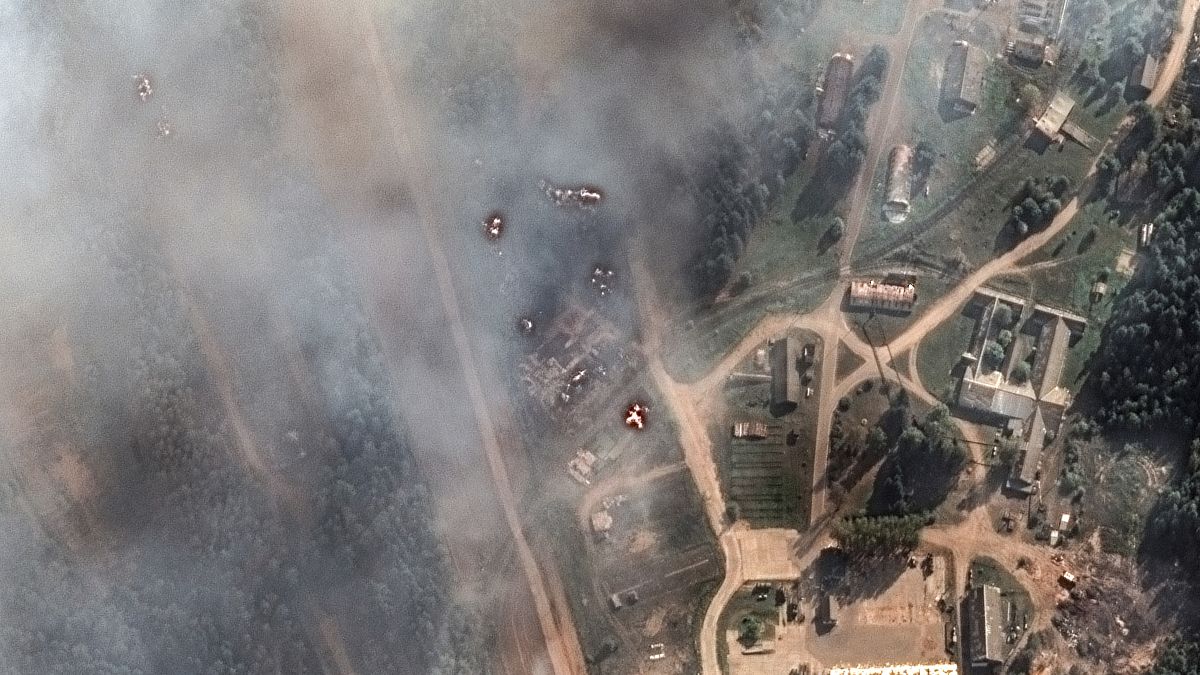Ukraine has hit three arms depots in Russia within four days, reportedly destroying tens of thousands of tonnes of munitions.
Over the past week, Ukraine has hit three Russian munitions depots within four days, all with domestically produced weapons.
The attacks are widely seen as Kyiv demonstrating its ability to strike targets deep inside Russia and are now calling the Western allies to lift their restrictions on delivered missile use, also exposing Moscow's alleged "red lines".
Last Wednesday, Ukraine struck the depot in Toropets, in Russia's region of Tver. Estonian Defence Forces Intelligence Centre stated that the strike caused 30,000 tonnes of various munitions to explode, noting that the size of the explosion was equal to simultaneously blowing up 750,000 artillery shells.
This means that the attacks destroyed enough Russian ammo to affect Russian operations in the coming months, the Institute for the Study of War estimated.
The UK Ministry of Defence made its own assessment public, adding that the Toropets depot is one of the most important ones in Russia. Renovated in 2018, it directly supported Moscow's operations in Ukraine.
In its intelligence update over the weekend, the UK defence ministry said that recent improvements to the site had been driven by previously poor storage of ageing explosive material, leading to a series of explosions across several depots.
But given that the explosion at Toropets caused an equivalent of a mild earthquake, it is highly likely that poor storage of munitions caused a chain reaction of cascading detonations within the bunker system.
Then, on Saturday, Kyiv's forces hit the depot in Oktyabrsky, about 16 kilometres south of Toropets, and another one in Tikhoretsk in the Krasnodar region.
The Ukrainian General Staff reported that the Tikhoretsk arsenal contained at least 2,000 tonnes of munition, including weapons provided by North Korea, at the time of the strike. Kyiv claimed it is one of the three largest ammunition depots in Russia and "one of the key storage facilities in the Russian military's logistics system."
The US-based Center for Strategic and International Studies think tank said in February that Tikhoretsk was one of a number of Russian ammunition sites that had been expanded to store munitions closer to the front lines.
What did Ukraine use to hit Russian arms depots?
In his evening address, President Volodymyr Zelenskyy admitted that Ukraine used domestically produced weapons.
"Another arsenal in Russia has been damaged, and it was a significant arsenal for the occupier," he said.
"The Security Service of Ukraine has also done a good job on another arsenal of Russian troops. These were depots of Russian tactical missiles and guided aerial bombs – all the things that Russia uses to terrorize our cities, our positions."
Zelenksyy did not specify the type of weapon used by Ukraine.
Russia reacted to the attack, saying that Ukrainian drones had been intercepted. The governor of the Krasnodar region said debris from a drone had sparked a fire, which “spread to explosive objects” and caused detonations. Residents nearby had been evacuated.
On Monday, Ukraine's defence minister stated Kyiv destroyed or damaged over 200 military facilities in Russia over the past year using the so-called "drone swarm" technology.
"Today Ukrainian drones fly over 1,000 kilometres, reaching Murmansk and the Volga region, destroying Russian oil refineries and airfields," Rustem Umierov explained.
Ukraine's UAV strategy, especially when launched deep into Russian territory, is also meant to show Kyiv's allies in the West that their concerns about escalations are rather exaggerated as per Kyiv's point of view, including the Kremlin's threats of all-out war with NATO in response.
Ukraine has already crossed those red lines on numerous occasions, for example by partially destroying the Russian Black Sea Fleet.












